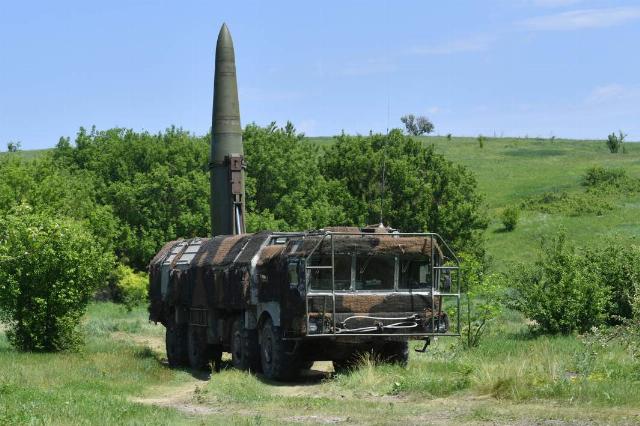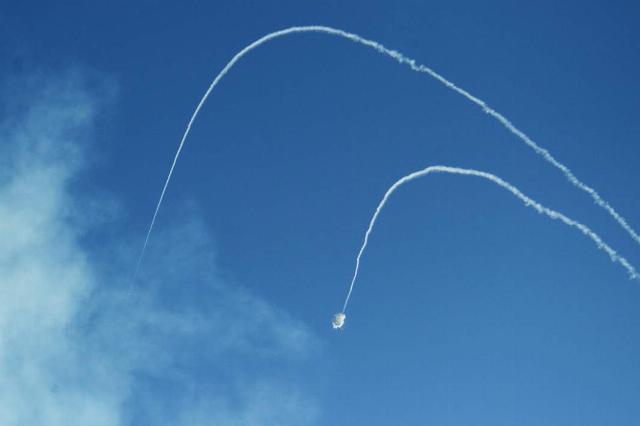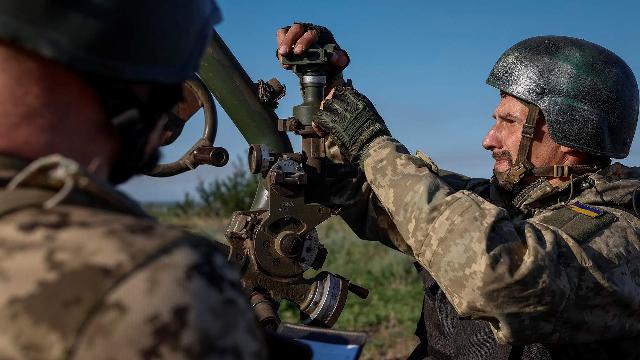In Ukraine, the Soviet reserve has been preserved, allowing the modernization of old developments
The United States plans to develop an inexpensive long-range aviation missile for Ukraine. The new ERAM (Extended-Range Attack Munition) product will have a range of up to 450 km and will significantly expand the capabilities of the Armed Forces of Ukraine to hit targets beyond the reach of those missile systems that are already at their disposal. At the same time, Kiev claims to have its own developments that can be improved to long-range missiles. What systems are at the disposal of the Armed Forces of Ukraine today and may appear in the foreseeable future — Izvestia investigated.
Ukrainian opportunities
During a recent visit to Washington, the head of the Kiev regime, Zelensky, requested the opportunity to strike with American missile systems deep into Russian territory 500 km away. He said that in response to American restrictions on strikes against targets deep in Russian territory, Ukraine has launched its own developments that could complement the ongoing drone war. Ukraine has some technological capabilities to modernize or create missile systems on its own.

A fragment of a converted anti-aircraft missile of the S-200 air defense system of the Armed Forces of Ukraine
Image source: Photo: RIA Novosti
To begin with, let's figure out how Ukraine can use the Soviet reserve and legacy. The possibilities of redesigning old S-200 anti–aircraft liquid-propellant missiles using a modern element base make it possible to reduce the mass of the guidance system several times and obtain a surface-to-surface missile with a range of more than 500 km. They cannot be made highly accurate, but they can be used on area targets and defeat a modified warhead, supplemented by an explosion of fuel residues in tanks. The S-200 missile has a length of about 10 meters and probably flies along a classic high ballistic trajectory, and therefore can be detected and destroyed by air defense systems of the Russian Armed Forces. In addition, it is likely that the stocks of these missiles have either been exhausted or destroyed and their number is clearly limited.
Another system with Soviet roots is a Ukrainian clone of the Soviet anti-ship cruise missile X–35 - R-360 of the Neptune complex. They were tested in 2018-2019 and before the special military operation, only prototypes of the complex were put into operation. The range in the anti—ship version is 280 km, but due to modernization it can be increased to 500 km. It is likely that such work is underway or was conducted by Artyom in Kiev. The refinement of the guidance system of such a missile for hitting ground targets is completely real and, most likely, has already been carried out. The only question is how and in what quantities, in the current situation, Ukrainian manufacturers can create these missiles. It is possible that we are talking about single copies of missiles over a period of several months.
The Grom-2 missile system is a modern reincarnation of the main missile project of modern Ukraine — work on it has been carried out at Yuzhnoye Design Bureau since 1994. The history of the complex has experienced many ups and downs and, finally, by 2020, it reached the creation of a prototype, which was funded by Saudi Arabia. In terms of its capabilities and ideology, it is close to the Russian Iskander-M. The main missile of the complex is a solid-fuel ballistic missile, which officially has a range of up to 300 km, but it is estimated that it may actually have a radius of up to 500 km. The main problem of this complex is the complexity of missile production in modern conditions. Work on the experimental batch of missiles, the assembly of which was started before 2022, may be completed, but the continuation of production of new products for this complex is extremely doubtful. In 2022, it is quite possible that these missiles were used against the Russian Saki air base in Crimea, but since then there has been no mention of the use of Thunder.

Iskander-M tactical missile system of the Russian Armed Forces
Image source: Photo: RIA Novosti
However, cruise missiles similar in combat capabilities to our X-55 and Kalibr types can also be created for the Grom complex. Ukraine has the technology to create such missiles and even exported it in the 1990s to China and possibly to other countries. The main problem here is that they need to be developed, tested, and produced quite complex components — engines, control systems, and guidance systems. In peacetime, this would have been possible, but now, for obvious reasons, it is fraught with enormous difficulties, and even with Western funding, there are great doubts about the ability of the modern Ukrainian leadership to organize the creation and release of such missiles. Nevertheless, if successful, they could have a range of 500 to 2000 km when launched from a ground installation. Mock-ups of such missiles were demonstrated by Ukraine at arms exhibitions in the late 2010s, but it probably did not go beyond the mock-ups to the beginning of its own.
With foreign help
Finally, long-range products for the APU can be created overseas. In January of this year, for the first time, a request was published to collect proposals for the creation of an inexpensive missile that could be produced and supplied to equip Ukrainian carrier aircraft. On July 10, the Department of Long-range systems of the Weapons Control Center of the U.S. Air Force Life Cycle Control announced for the first time that the ERAM missile project is designed specifically for Ukraine.
The minimum requirements for the new rocket set the creation of a product with a mass of up to 250 kg, with a range of action when launched from an aircraft up to 450 km, which can fly at a minimum speed of Mach 0.6 (the speed of sound). The ammunition must have an accuracy of hitting the target with a deviation of no more than 10 meters and be used without the use of GPS satellite navigation. Indirectly, this indicates the effectiveness of Russian means of suppressing satellite navigation systems of modern Western missile systems. Another requirement of the Pentagon is the low cost and high speed of development — overseas they are clearly in a hurry to create and test a new missile in Ukraine before the completion of their own.

Photo: RIA Novosti/Stringer
Image source: iz.ru
By the way, taking into account American financial resources, such a scenario is theoretically possible, and this project has a much better chance of success than homegrown Ukrainian missile developments. But in any case, it is unlikely that they will manage overseas in less than a couple of years. Not everything is possible to just take and buy with money.
Dmitry Kornev

